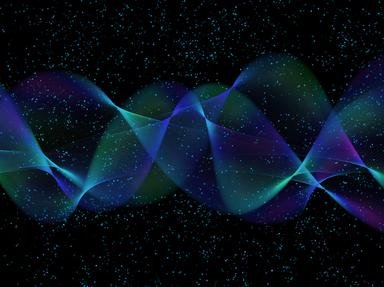Quiz Answer Key and Fun Facts
1. Every good physicist knows that Max Planck was the first to elucidate the concept of a quantum, an integral part of quantum theory (so integral in fact that the theory bears its name!). But what are the units of the fundamental physical quantum?
2. Another important step to the formation of quantum theory was Einstein's revolutionary explanation for the photoelectric effect, a phenomenon that seemed to clash with the classical wave theory of light. In particular, the contradiction lay in the fact that the energy of light did not seem to be related to its amplitude (intensity), but instead to its...
3. The revelation that light exhibited particle-wave duality was revolutionary, but it wasn't long before another physicist, Louis de Broglie, proposed that in fact all matter exhibited particle-wave duality. According to de Broglie, an object's wavelength depends on which of its properties?
4. In quantum theory, there is a famous relationship named the Heisenberg Indeterminacy Principle, which says that what two properties of a system cannot both be determined with arbitrarily small uncertainties simultaneously?
5. The famous Schrodinger Equation can be said to be the backbone of quantum theory. The equation says that if you apply an operator to the wavefunction of a system, the result is simply the original wavefunction multiplied by the energy of the system. What is the name of the operator?
6. The Schrodinger Equation was actually not the first successful attempt to describe the world quantum mechanically. Another physicist had already achieved what Schrodinger did with his equation at an earlier time, albeit in a different manner. Who was this physicist?
7. In 1928, Paul Dirac formulated a wave equation that bridged quantum mechanics with special relativity. The Dirac Equation applies to a specific set of particles that includes...
8. The Dirac Equation is an example of when theory predicts the existence of something that had not yet been discovered (such as when Neptune's existence was predicted from the pertubations in Uranus' orbit). What did the Dirac Equation predict existed (and would later be confirmed)?
9. While Dirac showed with his equation that quantum theory and relativity are at least not incompatible, fully merging quantum theory with relativity would require the development of what is called quantum field theory. What was the first fully developed quantum field theory?
10. So far, quantum field theories have been formulated for 3 of the 4 fundamental forces of nature. Which fundamental force has yet to be described by a quantum field theory?
Source: Author
aznricepuff
This quiz was reviewed by FunTrivia editor
crisw before going online.
Any errors found in FunTrivia content are routinely corrected through our feedback system.


